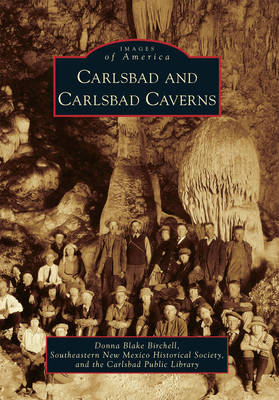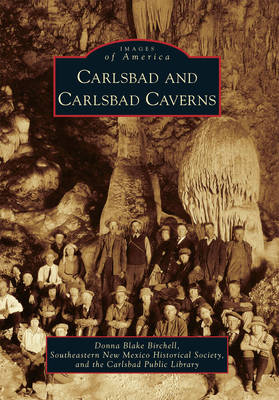
- Afhalen na 1 uur in een winkel met voorraad
- Gratis thuislevering in België vanaf € 30
- Ruim aanbod met 7 miljoen producten
- Afhalen na 1 uur in een winkel met voorraad
- Gratis thuislevering in België vanaf € 30
- Ruim aanbod met 7 miljoen producten
€ 34,95
+ 69 punten
Omschrijving
Created by the visionary Charles B. Eddy, Carlsbad rose from the humble beginnings of a tent city to become a vital community on the banks of the Pecos River. One of the largest irrigation projects known at that time made the transformation possible. The Carlsbad Caverns, discovered by James Larkin White and documented by local photographer Ray V. Davis, introduced the world to the wonders that lay beneath the desert surface. World War II saw Carlsbad members of the 200th and 515th Coast Artillery units being thrown into the midst of the Bataan Death March. With the discovery of a large deposit of potash east of town, agriculture flourished nationwide and prosperity returned to the town. As the country moved into the nuclear age, Carlsbad once again played a significant role. The detonation of the Gnome Project in 1961 and the Waste Isolation Pilot Plant of the present day have provided the country with vital knowledge and nuclear waste storage.
Specificaties
Betrokkenen
- Auteur(s):
- Uitgeverij:
Inhoud
- Aantal bladzijden:
- 128
- Taal:
- Engels
- Reeks:
Eigenschappen
- Productcode (EAN):
- 9780738578842
- Verschijningsdatum:
- 1/02/2010
- Uitvoering:
- Paperback
- Formaat:
- Trade paperback (VS)
- Afmetingen:
- 165 mm x 235 mm
- Gewicht:
- 308 g

Alleen bij Standaard Boekhandel
+ 69 punten op je klantenkaart van Standaard Boekhandel
Beoordelingen
We publiceren alleen reviews die voldoen aan de voorwaarden voor reviews. Bekijk onze voorwaarden voor reviews.










